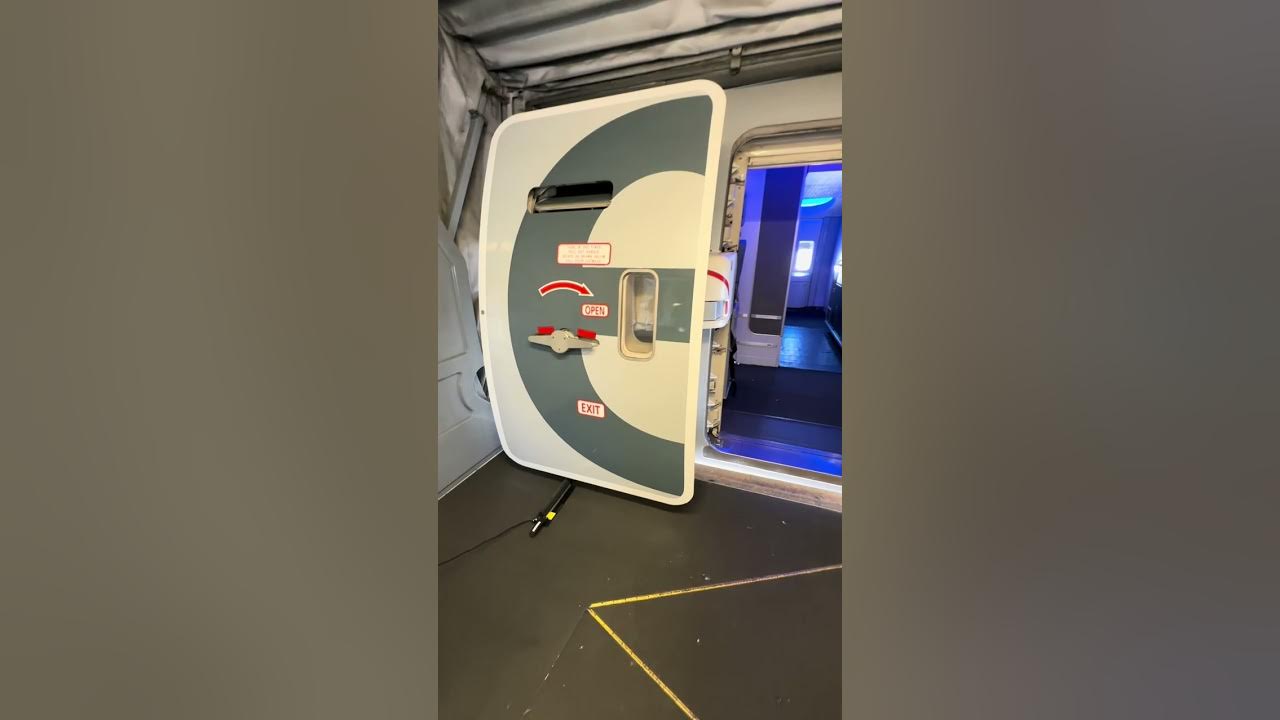How Flight Controls Work | Part 5 : Spoiler and Speedbrake
Summary
TLDRIn this segment of the flight control series, the operation of spoilers on the Boeing 777 is detailed. The aircraft features 14 spoilers that assist with roll control and act as speed brakes. Each spoiler is linked to a power control unit, receiving inputs from control wheels or the autopilot system. The interaction between mechanical and fly-by-wire control is emphasized, demonstrating how spoilers respond to roll commands and speed brake activation. This discussion sets the stage for future topics on high lift devices, enhancing the understanding of advanced flight control mechanisms.
Takeaways
- ✈️ The Boeing aircraft has 14 spoilers, with 7 on each wing.
- 🔧 Spoilers assist in roll control alongside flaperons and ailerons.
- 💨 Spoilers also function as speed brakes, enhancing the aircraft's deceleration.
- 🔄 Each spoiler is controlled by a power control unit (PCU) connected to hydraulic systems.
- ⚙️ Four input sources can trigger spoiler deflection: control wheels, autopilot, manual, and automatic signals.
- 🌀 Control wheels provide both mechanical and electrical signals to the spoilers.
- 📡 The primary flight computer (PFC) processes signals to manage spoiler operation during flight.
- 🤖 Autopilot commands utilize both back-driving of control wheels and fly-by-wire systems for spoiler deflection.
- 🔒 The speed brake lever has three positions: down, armed, and up, affecting spoiler deployment.
- 🚀 During speed brake activation, all spoilers are fly-by-wire controlled, including those normally mechanically controlled.
Q & A
What are the primary functions of the spoilers on a Boeing 777?
-Spoilers assist in roll control by working with the flaperons and ailerons, and they also act as speed brakes.
How many spoilers are present on the Boeing 777, and how are they distributed across the wings?
-The Boeing 777 has a total of 14 spoilers, with seven on each wing. The left wing has five outboard and two inboard spoilers, while the right wing has two inboard and five outboard spoilers.
What is the role of the Power Control Unit (PCU) in spoiler operation?
-The PCU operates the spoilers using hydraulic actuators and requires input signals to function. It provides redundancy by utilizing different hydraulic systems of the aircraft.
What input signals can activate the spoilers?
-The spoilers can be activated by control wheels, the autopilot computer, and the speed brake lever, with manual or automatic options for the speed brake.
How does the control wheel affect spoiler movement during a roll command?
-When the control wheels are rotated, position transducers send signals to the flight computers, which in turn control the movement of the spoilers, specifically the number four and eleven spoilers through mechanical and electrical signals.
What happens to the spoilers on the right wing during a right roll command?
-During a right roll command, the fly-by-wire controlled spoilers on the right wing deflect upwards, while the left wing's spoilers remain static, except for the mechanically controlled number four spoiler.
How does the autopilot computer influence spoiler operation?
-The autopilot computer sends calculated signals to the primary flight computer (PFC) to request roll commands, which control the fly-by-wire spoilers and back-drive the control wheels.
What are the positions of the speed brake lever, and what do they control?
-The speed brake lever has three positions: down (default), armed (for auto speed brakes), and up (for manual control). Each position affects how the spoilers are deployed.
What is the significance of the transducer in speed brake operation?
-The transducer detects changes in the speed brake lever's position and sends signals to the flight computer, which commands the maximum deflection of all spoilers during speed brake extension.
What will the next part of the flight control series cover?
-The next part will cover high lift devices, following the discussion on primary flight control surfaces.
Outlines

Esta sección está disponible solo para usuarios con suscripción. Por favor, mejora tu plan para acceder a esta parte.
Mejorar ahoraMindmap

Esta sección está disponible solo para usuarios con suscripción. Por favor, mejora tu plan para acceder a esta parte.
Mejorar ahoraKeywords

Esta sección está disponible solo para usuarios con suscripción. Por favor, mejora tu plan para acceder a esta parte.
Mejorar ahoraHighlights

Esta sección está disponible solo para usuarios con suscripción. Por favor, mejora tu plan para acceder a esta parte.
Mejorar ahoraTranscripts

Esta sección está disponible solo para usuarios con suscripción. Por favor, mejora tu plan para acceder a esta parte.
Mejorar ahoraVer Más Videos Relacionados

How Auxiliary Power Units Work | Part 1 : Starting

Aircraft Doors and Door assist ATA 52

What Really Happened to the Missing Malaysian Airlines Flight 370

How Jet Engine Works | Part 2 : Outputs

What Caused Air India 171 Crash, Mysterious Sound Before Impact

Surviving a Crash Landing in London | British Airways Flight 38
5.0 / 5 (0 votes)
